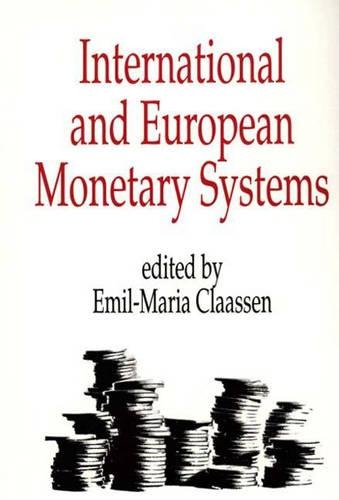
International and European Monetary Systems
(Hardback)
Publishing Details
International and European Monetary Systems
By (Author) Emil M. Claassen
Bloomsbury Publishing PLC
Praeger Publishers Inc
9th April 1990
United States
Classifications
Tertiary Education
Non Fiction
International economics
332.4
Physical Properties
Hardback
232
Description
This book examines a range of issues related to the current and future roles of international and European monetary systems. Among the topics covered are the relationship of each system to the US dollar and its fluctuations vis-a-vis the Japanese Yen and German Deutschmark; the effect of fiscal policies on monetary systems; the role of the European currency unit; exchange rate management and international coordination; the theory behind, and policy implications of, over-and-under-valued currencies and the prospects for future currency unification and currency competition. Divided into two sections, which address the international and European systems respectively, the book begins with three chapters that examine the exchange rate system of a managed float with respect to the dollar. The fundamental question addressed by the authors is whether this system, which has predominated in the last decade, has contributed to increasingly unstable real exchange rates. The following two chapters examine the role of the IMF's special drawing right and the appropriate exchange rate regime for developing countries. The remaining chapters focus on the European Monetary System and explore such issues as the convergence of monetary and fiscal policies within the European Monetary System and the role of the private European Currency Unit.
Author Bio
EMIL-MARIA CLAASSEN is Professor of Monetary Economics and International Economics at the University of Paris, Dauphine, and has held academic positions at the European University Institute, Florence, and at several other universities in Europe and the United States. His numerous previous works include three edited works on international economics: Stabilization Policies in Interdependent Economies, Recent Issues in International Monetary Economics, and Recent Issues in the Theory of Flexible Exchange Rates.
